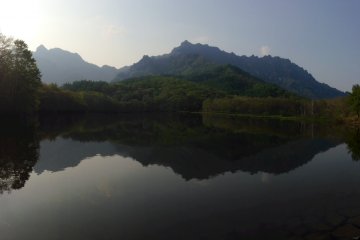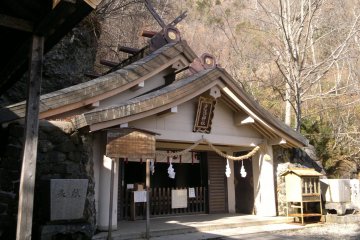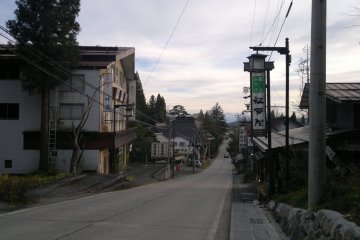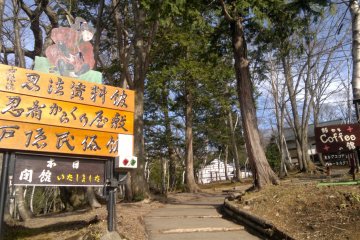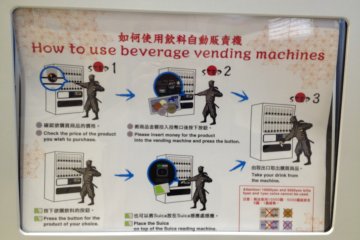Untouched by the modernity of Nagano City, Togakushi strikes you with its authentic and traditional feel. It is like opening the door to another world, with its folk customs and natural beauty. At 1280m, it is filled with scenes that are resplendent of mountainside village. It is surprising how a 45 minute bus ride from a busy capital city can take you to the highlands, rich with a thousand year old culture, making Togakushi a perfect day trip escape.
Your trip begins from Nagano Station, which can be reached easily from Tokyo by the Hokuriku Shinkansen using the JR East Pass. A one-way bus ride from the station to Togakushi start from ¥1,100 (depends on where you are planning to stop), but you should consider the Togakushi Kogen Free Kippu ticket for ¥2,600 which includes a round-trip bus between Nagano Station and Togakushi, unlimited bus rides throughout Togakushi Village; as well as a round-trip bus between Nagano Station and Nagano’s top attraction, Zenkoji Temple. This free kippu or ticket can be obtained from Alpico Office, the bus operator, which also serves as the point where you can catch your ride to Togakushi.
You can feel the splendid country atmosphere as soon as you leave downtown Nagano. A picturesque range of green and orange mountains will be your company along the way. The bus passes through the Asakawa Loop Line, a main road that will take you deep into the mountains. Once it reaches a tranquil residential area, you’ll be set to explore Togakushi.
Togakushi Jinja Shrine
Upon entering the village, most tourists will make their way to the shrines. They tell the story of the Sun Goddess in Japanese mythology, like a string of pearls from the base of the village to Mt. Togakushi which is believed as a god. The shrine starts from Hokosha (the lower shrine), to Chusha (middle shrine), and ends up with Okusha (upper shrine) which is hidden inside a forest of over 400 years old cedar trees.
These shrines are connected by the main roads where the bus passes, along with side hiking trails that heads all the way up the forested mountains. Despite the order of the shrines, you can start from the top by trekking the 2km mystical cedar pathway to Okusha Shrine, and finish at Hokosha during sunset before going back to Nagano City.
Togakushi Soba
After visiting Hokosha Shrine, you would be ready for to try the town's signature soba dish. Togakushi‘s soba is famous across Japan, and it’s a shame if you don’t taste the buckwheat noodles from its place of origin. Around thirty soba restaurants are scattered throughout the village, mainly around Chusha Shrine (you can have a lunch break in one of these restaurants before continuing the journey). There’s even a museum dedicated to soba called the Togakushi Soba Museum Tonkururin (admission: ¥200) where you can see interesting exhibitions about the culture of this dish, as well as an opportunity to try your hands in making soba.
Togakure Ninja
Long ago, Togakushi was known as Togakure – a village believed to be the birthplace of Togakure Ninja. Therefore, experiencing ninjutsu completes your trio of Japanese cultural icons in Togakushi. Ninja Museum Togakushi Minzokukan (admission for adult: ¥600 child: ¥400) was established to preserve the existence of these Warring States period shinobis. It has a collection of over 500 ninja tools and pictures of ninja practices, and is located across the entrance of Okusha Shrine. If you have little ones in tow, keep an eye for Chibikko Ninja-mura (admission for adult/child: ¥500 infant: ¥230) near Chusha Shrine. It is a Ninja Village designed like a theme park, where you and your kids can explore the ninja house as well as practicing ninja skills.
Once you have finished visiting these ancient shrines, tasted the local soba and experience the magic of ninja, your day comes to a close. Whether you return to your accommodation, or continue to head north, you have at least gotten a taste of life off the beaten track and discovered Japan’s hidden doorway to natural beauty: the serene Togakushi.





